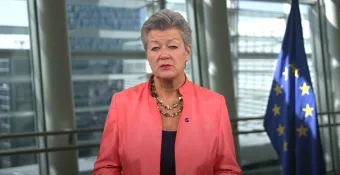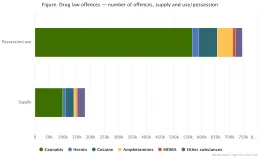Infographic: MDMA samples tested by drug checking services between January and June 2019
Description
From the European Drug Report 2020: Trends and Developments. Exract (p. 38)
Further data on MDMA dosage and purity are available from drug checking services operating in a number of European countries. These data, while not a representative sample, also point to the high MDMA content of tablets available in Europe and an increase in dosage over time. In the period January-June 2019, samples presented as MDMA (both tablets and powders) were the second most common substance received for testing by European drug checking services. About 70 % of the 969 samples presented as MDMA were submitted for testing in drop-in centres and 25 % at music events. The average amount of MDMA per tablet tested in drug checking services was 180 milligrams, a slight increase on the 172 milligrams found during the same period in 2018, but much higher than the average of 102 milligrams found by the same network in 2012. Individual tablets with exceptionally high amounts of MDMA (in excess of 270 milligrams) were reported by services in five countries. High-purity MDMA in powder form was reported by all services, with an average purity of 88 %, compared with 72 % during the same period in 2018. Overall, samples presented to the services as MDMA were unlikely to contain any other pharmacologically active component, with such adulterants found in only 5 % of the powder samples and 6 % of the tablets tested (Figure 17). Caffeine was the most common adulterant in these samples, although the drug ketamine was detected in four MDMA samples. Half of the samples presented as MDMA were obtained through direct contact with a known supplier. Obtaining the drug through the darknet (13 %) was the next most common means of acquisition.














